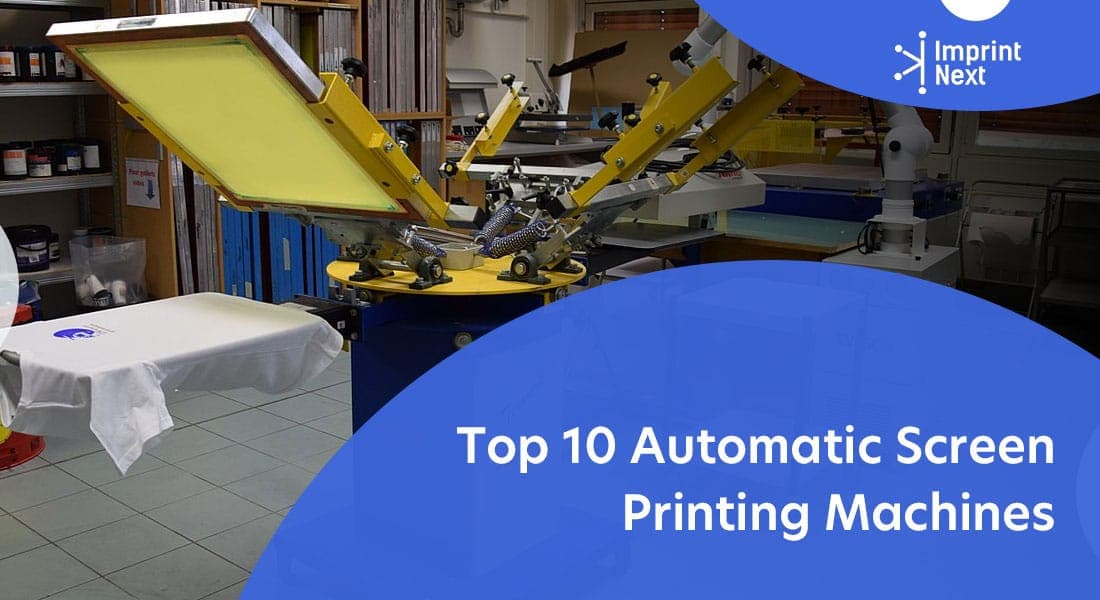
Last Updated on: 21st January 2025, 8:27 am
The web-to-print industry continues to grow in the current year. Indeed, we are most likely to witness an explosive growth over the past several years, and shows no signs of slowing down in this year and further.
With the advancement in printing technology, increase in consumer-centric preferences, and an ongoing shift towards ecommerce across industries, the sector is set for yet another year of expansion.
As a product decorator in the printing space, it is important for you to know these key trends which may play a crucial role for leveraging new opportunities and keeping pace with customer expectations. Here are 8 major developments shaping web-to-print in the year ahead.
1. Automating Printing Processes with AI:
Artificial intelligence and automation continue to transform the web-to-print industry. Thus, the ImprintNext's artificial intelligence product design software are one the innovations which are driving higher efficiencies, enabling print businesses to manage more volume, and reducing overhead costs.
In this year, expect platforms to increasingly integrate AI tools like machine learning, natural language processing, and big data analytics.
This will allow for more tasks from initial order taking to production to fulfillment and shipping to happen independently of human involvement. Customers may soon even have an “automated assistant” guiding them through the purchase process.
2. Augmented and Virtual Reality in Product Customization:
Both augmented reality (AR) and virtual reality (VR) are unlocking new opportunities in the web-to-print space.
ImprintNext let your customers visualize a finished print product in their intended setting before purchase.
Whether overlaying images onto a real-world backdrop with AR or examining products in a complete virtual environment with VR, this deeper preview experience results in better purchase decisions and higher customer satisfaction.
Though still in their infancy for printing applications, anticipate increased AR and VR adoption across web-to-print in this year. The immersive product customization enabled by these tools is a win for vendors and customers alike.
3. More Integration with Fulfillment Partners:
Delivering a positive customer experience requires a streamlined process from order to production to fulfillment and logistics. As customers continue demanding faster deliveries and more visibility into status, robust integration between web stores and fulfillment networks becomes essential.
In the year ahead, look for web-to-print platforms to provide expanded and real-time connectivity into shipping systems and logistics networks.
Automating status updates and tracking information leads to better communication around deliveries. For businesses, stronger fulfillment partnerships free up resources to better innovate on the printing itself.
4. Sustainable Printing:
Consumer consciousness around environmental issues continues to build. For today’s buyers, sustainability is increasingly a primary factor in purchasing decisions. Given shifting attitudes, “going green” with printing practices is transitioning from niche offering to competitive necessity.
Expect major investments from web-to-print providers in expanding eco-friendly production methods in this year. This means more vegetable-based inks, renewable paper stocks, recycle-friendly materials, modern printing equipment, and lower-emission transportation. As climate concerns mount globally, sustainable printing lets companies align with consumer values.
5. Hybrid Work Models:
The pandemic triggered new attitudes around remote work flexibility across industries. With talent demanding more freedom in where and how they operate, businesses are adopting hybrid models melding both in-office and distributed teams. The web-to-print space is no exception to this trend.
In the coming year, look for more printing businesses opting for flexible working arrangements, co-working spaces, and cloud-based collaboration tools as they build out distributed workforces.
Blending physical infrastructure with digital systems will enable scalability and resiliency. A hybrid model also expands available labor pools to access specialized skill sets on-demand.
6. Personalization Capabilities Expand Further:
Today’s buyers have come to expect personalization with any products they purchase, including printed materials. Customization options go beyond basic configurations such as size, layout, binding, etc. Modern digital printing opens the door for small batch work and unique, individualized products.
Heading into this year, count on web-to-print solutions providing purchasers easily tailor and order products to their branding and campaign needs.
Platform innovations around dynamic object embedding, flexible data usage, versioning, and hyper-variable content will drive more customization. Increased automation and AI-enablement will unlock personalization at scale.
7. Tight Security Mandatory:
Printing provides a window into potentially sensitive customer data across order histories, creative files, usage analytics, and more.
At the same time, web platforms face growing threats from hackers. Together, this requires a comprehensive data security mechanisms which includes encryption, access controls, multi-factor authentication, and so on.
As attacks grow more frequent and severe, expect security to become central pillar for online printing vendors. ImprintNext delivers robust protection over infrastructure, processes and information will ease privacy concerns that could otherwise limit use in enterprise and government sectors.
8. More Specialized Platforms Emerge:
In this year, the web-to-print industry in going to fragment vertically into a number of niches. Instead to selling all printable products at one place, it may fragment into each store selling a specific or unique product. That is to say, selling a niche product.
While generalized options still absolutely have their place, buyers benefit from platforms optimized for use cases like retail signage, wedding stationery, food packaging, industrial components, and more.
Building platforms with specialized printing services around design templates, material options, finishing methods, and integrations better serves individual verticals.
At the same time, M&A activity will remain healthy as providers pursue competitive edge on industry expertise through acquisitions.
9. Automation in Ecommerce:
Most prominent trends in the web-to-print industry will be the full integration of e-commerce and automation.
This trend allows businesses to link their e-commerce platforms with back-end systems like marketing, inventory, and customer relationship management (CRM) tools.
10. Hyper-personalization:
The growing demand for hyper-personalization is pushing web-to-print platforms to enhance the way customers interact with design tools. Customers can create unique products using AI-driven design suggestions or augmented reality previews to visualize the final product before committing to it.
AI tools will help customers in creating custom designs by providing suggestions, improving designs automatically, and offering real-time feedback during the design process
The Year Ahead
These developments merely highlight various innovations and implementation that may shape web-to-print in this year and further.
For businesses availing printing and marketing services, the coming year promises more opportunity than ever to create high-impact customer experiences leveraging emerging technologies.
Savvy print shops will monitor these trends closely to both anticipate what’s ahead and to forge their roadmap towards a future-ready operation.
















